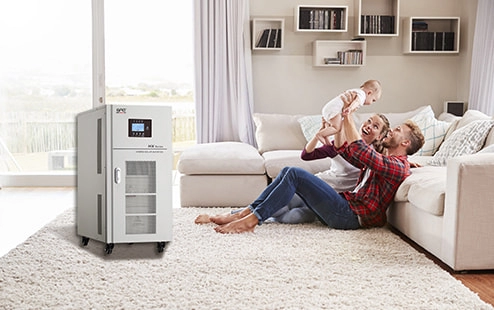The amount of benefits a person can derive from a solar system is heavily dependent on how well the system operates. Conversion of sunlight into electricity is performed when solar panels are installed, but it can be affected by other variables including dirt, shading as well as the system configuration. These challenges have led to the rise of micro inverters, which have proven to be far more powerful and advantageous in terms of energy generation, reliability and flexibility than traditional options. Unlike in traditional string inverters — which convert DC electricity for a batch of panels — micro inverters work across each panel independently, offering greater control over the generation of energy. How Do Micro Inverters Help in Improving Solar Panel Performance?

Micro inverters are small devices connected to each of the solar panels in a photovoltaic (PV) system. In contrast to traditional inverters that convert power from the entire array at once, micro inverters do this for each individual panel. In other words, each panel’s performance is maximized on its own, without interference from the other panels. Instead of a single, large inverter to convert the DC generated by the solar panels to AC, micro inverters are mounted either on the panel or on the racking which gives homeowners a remedy to some inefficiencies associated with string inverting.
The greatest benefits of micro inverters is their ability to increase energy production on a per-panel basis. In traditional solar setups with a string inverter, all the panels are linked in series, so the power output of the entire system is limited to the weakest performing panel. One shaded, dirty, or defective panel can drag down the total output from the entire system. This problem is avoided with micro inverters because they transform DC power produced by each panel individually. The reason for this is, it enables each panel to operate at maximum efficiency no matter the condition of the other panels. For example, if one panel is shaded by a tree or cloud cover, the remaining panels will continue to function normally, resulting in better overall performance.
MPPT: Short for maximum power point tracking, a technology that makes sure a solar panel always works at peak voltage and current, according to amount of sunlight during the day. Micro inverters have MPPT for every panel, while conventional string inverters have one MPPT for the whole array. That means that each panel can adapt to conditions in real time (such as changing sunlight, or faster and slower temperature variations). That makes micro inverters especially beneficial in cloudy locations, or where one part of the roof might shade another, so some panels get more sun than others from time to time. Micro inverters optimize the energy outputs of individual panels, meaning that the total output improves, even in some extreme situations.
Micro inverters also provide redundancy, which is another major benefit. With normal solar system configurations that use a central string inverter, if the inverter hits the bucket the whole of the system fails. Repairing or replacing defective inverter can be expensive, arduous, and time-consuming. With micro inverters, you have one for each panel, so if one of the units goes down, the rest of the panels can continue generating power without any hiccups.
The decentralized design not only improves the reliability of the system, but also increases the life expectancy of the solar power system as a whole. Micro inverters have a longer lifespan that traditional string inverters, which traditionally need to be replaced after 10 to 15 years. On the other hand, micro inverters can often last 25 years or longer, giving you the peace of mind for the long term.
Shading is a common problem for solar panels; partial shading can greatly decrease energy production. In a system with a string inverter, one shaded panel can pull down the output of the entire string, lowering overall efficiency. But with micro inverters, each panel works separately, meaning shading on one one does not affect performance of the others. This can make micro inverters particularly beneficial for homes that may be affected by trees, nearby buildings, or any other potential sources of partial shading.
Micro inverters minimize the impact of tar in turn which resolves the issue of your whole solar system power efficiency, even if you live in partial shaded place which in turn works on how sunnier it gets during the day. This is especially critical for homeowners looking to maximize their solar installation, regardless of their roof design or surrounding landscape.
Micro inverters have proven to be a game-changer in solar technology, providing numerous advantages over traditional string inverters. By optimizing the performance of each panel independently, micro inverters maximize energy production, improve reliability, and offer real-time monitoring. They are particularly effective in reducing the negative effects of shading, enhancing overall system efficiency, and providing greater flexibility in system design. Additionally, their compact size and scalability make micro inverters an ideal choice for homeowners looking for a reliable, high-performing solar system. As more people turn to solar energy to meet their energy needs, micro inverters will continue to play a crucial role in ensuring the efficiency and longevity of solar power systems.